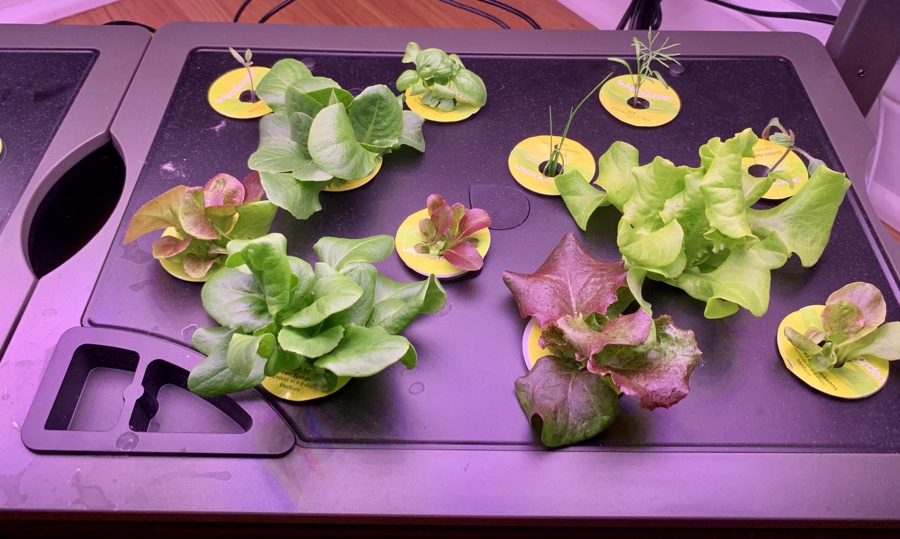As I explained in my first post in this series, I first became interested in hydroponics more than fifty years ago. A high school acquaintance and I generated a science fair project based on some recipes I had discovered for growing plants without certain key nutrients and we grew corn (I grew up in Iowa) comparing a control group and three treatment groups each without a key nutrient.

My next experience with school gardens came many years later when I was a young professor interested in how schools might use technology to encourage student interest in science. My undergrad training had focused on biology and high school teaching, but my education also included research experiences focused on learning and eventually this combination led to a career as an educational psychologist. My interests led to some unusual activities for an academic. At one point, I became acquainted with a couple of individuals who were responsible for the educational outreach efforts of North Dakota Game and Fish. They had a program that interested me and I thought I could make a contribution to the program through the use of technology. The program was called OWLS (outdoor wildlife learning sites) and it involved the Game and Fish Department offering small grants to schools to start gardens originally intended to focus on native plants and animals. Most of these projects were small, but in some rural areas where more land might be available could involve several acres. My idea was to create a website participant schools could use to share their experiences in developing these sites. Game and Fish bought me a server and with the dedicated IP the University provided to my office, I started serving web content. I went on to offer other content from Game and Fish online that had potential educational value (e.g., the NDWild clipart collection – https://learningaloud.com/clipart/), but it is the OWLS sites that are relevant here.
I learned a lot from the OWLS project and not all of the experiences were positive. For example, gardens seem like a great idea, but a good part of the growing season does not overlap with the time students are in school and this poses some issues. Too many of the OWLS turned into weed patches (most were botanical learning gardens and not vegetable gardens) over the summers.
As a thought I tried the Wayback Machine to see if anything from this effort had been saved and I did find some content from 1997. It is unfortunate that the photos of the various gardens are no longer available, but some of the text information still remains.
I have written about school gardens on other occasions. In this post from 2013 I question why gardens are so seldom mentioned in the trendy focus on other STEM topics.
School gardens are not necessarily hydroponic. I used classroom gardens purposefully to bring attention to this unique approach. This approach to production allows a year-round opportunity which means students will have better access during the school year. Hydroponic agriculture has some unique advantages to traditional agriculture
- Basics of hydroponics as alternative to traditional agriculture
- National Parks Service – An overview of hydroponic approaches
- University of Minnesota Extension – great general resource explaining options beyond the kit approach which may be of interest in secondary grade projects

School/Community Connections
Students who live in urban areas may have little understanding of where their food comes from or how it is produced. This lack of understanding is even greater in poor, minority communities. Access to good food can also be a justice issue as markets with fresh food move to affluent areas leaving those with low incomes less able to purchase healthy food. Protests after George Floyd’s death closed the only full-service grocery store for a 3-mile radius of North Minneapolis. This challenge is sometimes described as a food desert. Community gardens and school gardens offer a response to this need.
- Teens for food justice
- Community garden and good inequality Minneapolis
- KQED – hydroponic school gardens for food justice
- Spark-Y – a Minneapolis-based based effort focused on aquaponic systems and smaller systems in Twin City schools; video tutorials –
- Teacher College FoodCorp – this is a pdf
- This site from the US Department of Agriculture includes a data explorer allowing interested parties to obtain information about school gardens their state
School garden lesson plans
- Kids Gardening
- We are teachers gardening ideas
- Earth Easy – start a school garden
- Horticulture lesson plans
- FDA – science and our food supply
Climate change education
Science fair projects
![]()
You must be logged in to post a comment.